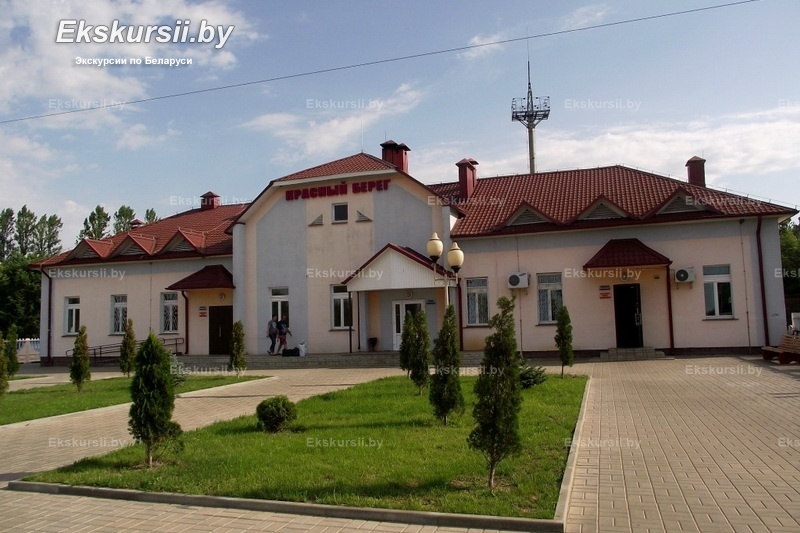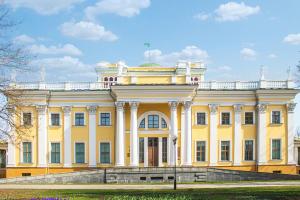History of the development
The first written records of the settlement date back to 1317. Then news of the Krasnyj bereg appears only after 200 years in connection with its sale in 1528 by Alexey Zenkovich to another landowner. At that time the village was part of the Rechytsa district of the Minsk province of the Great Duchy of Lithuania.
During the fierce battles of the Polish-Russian war of 1654-1667 Krasnyj bereg and other surrounding villages were almost swept off the ground. Information about the continued existence of the Krasnyj bereg is known from the references to 1862, when, after the abolition of serfdom, local peasants began to buy part of the estate of the landowners.
In 1877, the estate in the Krasnyj bereg is bought by Major General Gatovsky, who later gave him to his daughter Maria and her husband Vincent Kozel-Poklevsky. Here they unfold a large-scale construction, which radically changes the look of the manor. In 1893 a palace was built here and a beautiful «English park» was laid out, which is considered to be a monument of landscape gardening art of the XIX century.
In 1905, the revolutionary situation in Russia responded to the Red Coast as an attempt by local peasants to rob the manor’s estate, but the Cossacks, who quickly arrived from the Bobruisk fortress, stopped these attempts.
After the revolution of 1917, large construction works were unfolding here: a jam factory was built, a fuel storage base, railroad laid and a school building.
From 1941 to 1945 the village was fully occupied by the German army. Here, on the orders of Hitler, a children's donor concentration camp is being built, where children of 8-14 years unwittingly gave all their blood to seriously wounded German officers. According to approximate data, about 4,5 thousand children died here. After the war, a memorial was erected at the site of the tragedy in memory of the victims of the Nazi occupation.
In the 1960s, the village grew: a starch factory, a primary milk processing shop, a bakery, a powerful electrical substation, a railway station, many shops, a technical school, a library, schools and kindergartens were built here.
In 2009, the village was given the status of urban village. Today, about 2 400 people live here.
Tourism potential
The main attractions of the agro-town are:
- Farmstead house Kozel-Poklevskih a vivid example of monuments of architecture and landscape art of the end of the XIX - beginning of the XX century of the eclectic direction. The undoubted advantage of the monument is the integrity and good safety of the constituent elements. The farmstead house, which is the main architectural element of the complex, was built in the years 1890-1893 by the design of Professor of Architecture of the St. Petersburg Academy of Arts Schroeter. The ensemble is located on the bank of the Dobosna River and includes a manor house, an outbuilding, a number of outbuildings surrounded by a park.
- «English park» with landscape-regular planning area of about 10 hectares. It was founded by the architect F. Shaniora. Monument of nature of republican value.
- Memorial complex «Krasnyj bereg» opened in the apple orchard of the village in 2006, the author of the memorial is Leonid Levin. The memorial is dedicated to children who died during the Great Patriotic War and died as a result of the Chernobyl disaster.













